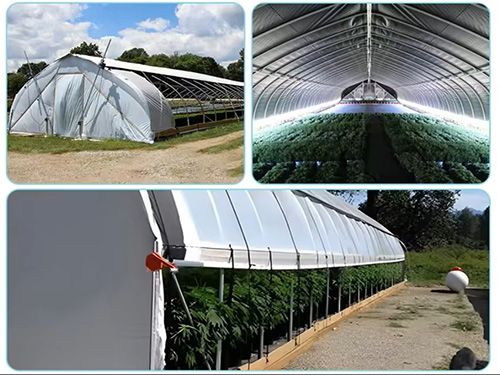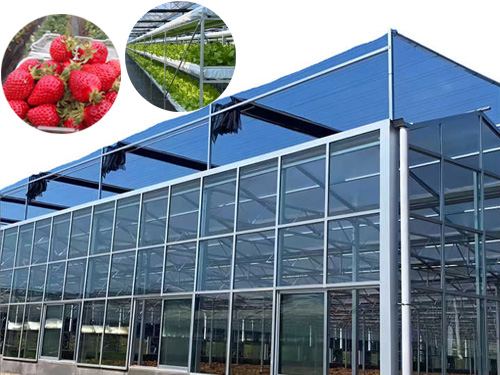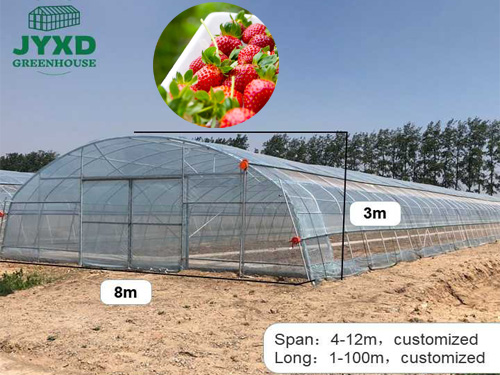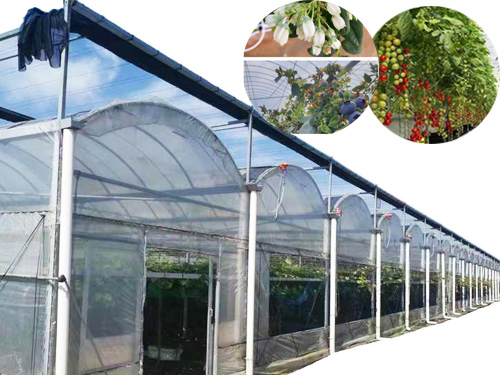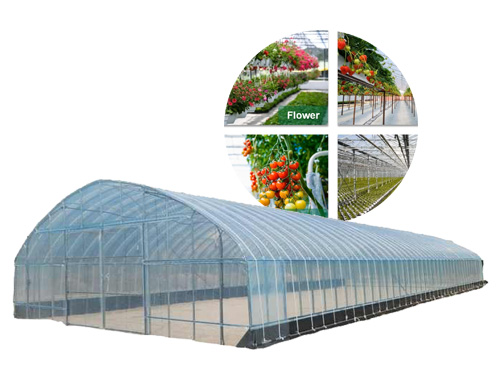NEWS DETAILS
NEWS INFORMATION
Valley Greenhouses: Flood Prevention and Soil Improvement Strategies
AUTHOR:jyxd-greenhouse DATE:2025-03-08 11:03:04 HITS:187
Greenhouses located in valleys face unique challenges, particularly when it comes to flood prevention and soil management. Valleys, by their nature, tend to collect water, making them susceptible to flooding during heavy rainfall or snowmelt. Flooded greenhouses can cause significant damage to crops, disrupt plant growth, and lead to soil erosion. However, with the right strategies in place, valley greenhouses can be designed and managed to reduce the risk of flooding while optimizing soil conditions for sustainable farming. This article explores effective flood prevention measures and soil improvement strategies that can be implemented in valley greenhouses to ensure healthy crop production.
1. Understanding the Challenges of Flooding in Valley Greenhouses
Flooding is a major concern for greenhouses located in valleys, as these areas often have poor drainage and are prone to water accumulation. When heavy rains occur, water can overflow and flood greenhouse structures, leading to:
• Waterlogged Soil: Excess moisture can saturate the soil, depriving plant roots of the oxygen they need to thrive. This can lead to root rot, stunted growth, and reduced crop yields.
• Erosion: Floodwaters can wash away topsoil, depleting the nutrient-rich layer that is essential for plant growth. Soil erosion can also make it more difficult to grow crops in the future.
• Structural Damage: Greenhouses themselves can be damaged by flooding, with water seeping into the foundation, warping structures, or even causing collapse in extreme cases.
Given these challenges, valley greenhouse owners must take proactive measures to prevent flooding and improve soil health to maintain a productive growing environment.
2. Flood Prevention Strategies for Valley Greenhouses
Effective flood prevention is crucial for protecting both crops and greenhouse infrastructure. There are several strategies that can be employed to mitigate the risk of flooding:
2.1 Elevated Greenhouse Structures
One of the most effective ways to prevent flooding in valley greenhouses is to elevate the greenhouse above potential flood levels. This can be achieved by building the greenhouse on raised foundations or mounds. Elevating the structure ensures that water does not enter the greenhouse, even during heavy rainfall.
The use of raised beds within the greenhouse also helps to prevent water from accumulating around plant roots, keeping them dry and well-drained. Raised beds can be constructed using materials like wood, stone, or cinder blocks, and are particularly beneficial in areas with poorly draining soils.
2.2 Proper Drainage Systems
Installing an efficient drainage system is essential to channel water away from the greenhouse and prevent flooding. Some key components of a good drainage system include:
• French Drains: These trenches filled with gravel and perforated pipes allow water to flow away from the greenhouse and out of the valley. French drains can be strategically placed around the greenhouse perimeter to direct water away from the structure.
• Surface Drainage Channels: Creating surface channels or ditches around the greenhouse can help direct rainwater away from the greenhouse area. These channels should be designed to slope downward, ensuring water flows freely and does not pool near the greenhouse.
• Gutters and Downspouts: Installing gutters along the greenhouse roof and connecting them to downspouts allows rainwater to be collected and directed away from the greenhouse. This helps prevent water from pooling around the foundation and reduces the risk of flooding.
2.3 Stormwater Management Systems
In areas prone to heavy rainfall, a stormwater management system can help prevent flooding by capturing and managing excess rainwater. Rainwater harvesting systems, which collect and store rainwater for later use, can also help reduce the strain on the local water supply.
2.4 Permeable Pavement and Ground Cover
Using permeable pavement or gravel pathways inside and outside the greenhouse allows water to flow through the surface and into the ground, reducing the amount of surface runoff that can cause flooding. Ground covers, such as mulch or ground-cover plants, can also help absorb excess water and prevent soil erosion.
3. Soil Improvement Strategies for Valley Greenhouses
Soil quality is essential for healthy crop growth, and valley soils are often prone to poor drainage, erosion, and nutrient depletion. Improving soil conditions is crucial for creating a productive growing environment in valley greenhouses. Some effective soil improvement strategies include:
3.1 Soil Aeration
In valley greenhouses, soil can become compacted due to excess water or heavy equipment, reducing its ability to retain air and nutrients. Aerating the soil helps improve water drainage and root penetration, which is particularly important in waterlogged areas. Methods for aerating soil include:
• Manual Aerators: Hand tools such as garden forks or aerators with spikes can be used to manually aerate small garden beds and raised beds within the greenhouse.
• Mechanical Aerators: For larger greenhouse operations, mechanical aerators or tillers can be used to break up compacted soil, allowing air and water to reach plant roots more effectively.
3.2 Organic Matter Incorporation
Adding organic matter to the soil improves its structure, fertility, and moisture retention. Organic materials such as compost, manure, and cover crops enhance soil texture, increase microbial activity, and provide plants with essential nutrients. Compost also helps improve soil drainage by breaking up heavy clay soils that are prone to waterlogging.
3.3 Use of Raised Beds and Containers
Raised beds and container gardening are excellent ways to improve soil conditions in valley greenhouses, especially if the native soil is of poor quality. These methods allow for greater control over soil quality and drainage, ensuring that plants receive optimal growing conditions. Raised beds also minimize the risk of soil erosion, which is common in flood-prone areas.
3.4 Mulching and Erosion Control
Mulching helps retain moisture in the soil, reduces weed growth, and prevents erosion. In flood-prone areas, mulching is especially important for protecting the soil from being washed away during heavy rains. Organic mulches such as straw, wood chips, and leaf litter provide a protective layer on the soil surface, while also adding nutrients as they break down.
3.5 Soil pH and Fertility Testing
Regular soil testing helps monitor the pH and nutrient levels of the soil, allowing growers to make adjustments as needed. Lime can be added to acidic soils, while fertilizers can replenish depleted nutrients, ensuring that plants have access to the nutrients they need for healthy growth.
4. Conclusion
Valley greenhouses offer a unique opportunity to grow crops in areas that may otherwise be difficult to cultivate due to flooding and poor soil quality. By implementing effective flood prevention strategies such as elevated structures, proper drainage systems, and stormwater management, greenhouse owners can reduce the risk of flooding and protect their crops. Additionally, improving soil conditions through aeration, organic matter incorporation, and soil testing helps ensure healthy, productive plants. With the right combination of strategies, valley greenhouses can thrive and provide sustainable, high-quality crops in even the most challenging environments.
Would you like additional insights on greenhouse flood prevention or soil improvement techniques for specific crops?
Hebei Juyou Xinda Greenhouse Facilities Co.,Ltd.
Copyright © 2024-2025 https://www.jyxd-greenhouse.com. All Rights Reserved Hebei Juyou Xinda Greenhouse Facilities Co.,Ltd.Copyright





 Current Location:
Current Location:


